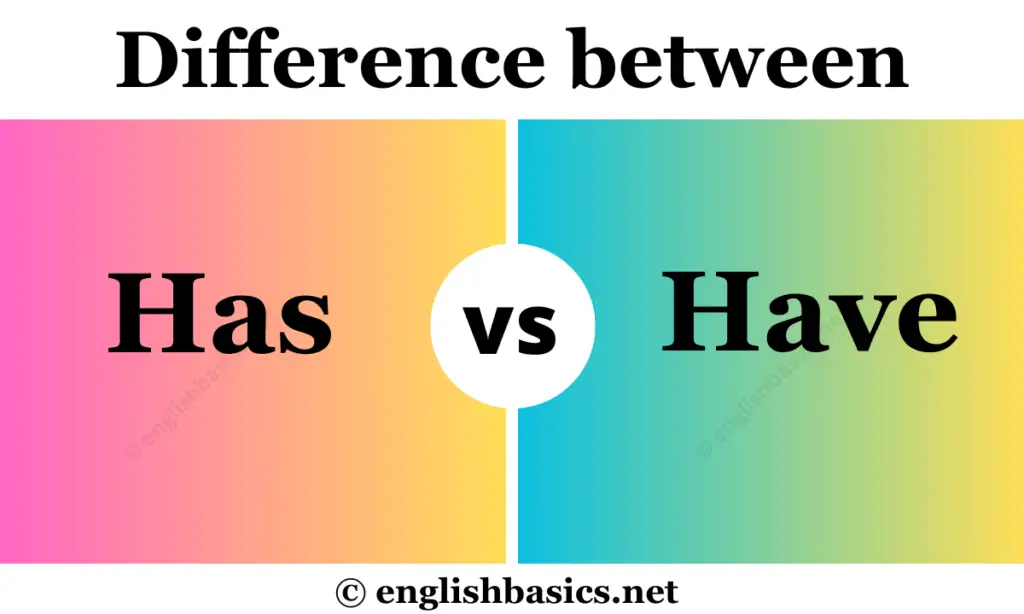The terms “has” and “have” have different usages that people often overlook or find difficult to understand. While “have” and “has” are both different conjugations of the same verb “to have, “they differ in the way they are used.
The main difference between have and has is that “have” is used when speaking in the first and second-person singular and plural and third-person plural, while “has” is used when speaking in the third-person singular. Let us discuss this in more detail.

Has vs Have – Difference
The verb “to have” generally means to possess, contain, or hold something. The conjugations “have” and “has” indicate such actions in the present tense. They express or describe the things or events that are happening in the present.
Has
The conjugation “has” is used when we indicate “to have” in the third-person singular present tense. To simplify it, “has” is used with pronouns like he, she, and it. Sometimes it is also used when we are referring to someone by their name. For example;
- He has a small nose.
- Bella has so much work to do.
- It has a strong sense of smell.
It is to observe that “has” can be used only with third-person singular pronouns.
Have
The conjugation “have” is used when we indicate “to have” in the first and second-person singular and plural present tense and third-person plural present tense. To make it simple, “have” is used with I, they, we, and you. For example;
- I have a lot of homework to do.
- We have a house party tonight.
- Do you have any problem?
Contractions of Has and Have
Contractions are generally used while speaking. Contractions are shortened words that connect two words and remove one or more letters from those words. It makes conversations sound more casual.
Contractions of “have” are usually indicated in the present perfect tense. “Has” can also be used in the present perfect tense. However, “has” is not as adaptable as other forms of contractions.
The grammar rules concerning the usage of contractions remain the same, as mentioned earlier. “Have” is used with I, they, we, and you, while “has” is used with he, she, and it.
Let us look at some examples of both positive and negative contractions;
Positive contractions of Has and Have
- I’ve been feeling sick lately. (I and Have)
- They’ve told the teacher not to allow games. (They and Have)
- She’s written everything. (She and Has)
Observe that we use “have” when the noun is in the first and second-person singular and plural and third-person plural, and “Has” is used when the noun is in the singular third-person.
Negative contractions of Has and Have
- I haven’t done anything. (have and not)
- It hasn’t woken up yet. (has and not)
But when we try to show possession or mean “to have” while writing or speaking, we do not usually use contractions. But native speakers often use possessive contractions with the combination of the word “got.” For example;
- I’ve got a blue shirt.
- She’s got you mesmerized.
Now, we know when and how these words can be applied and used. You should remember that “have” is used with I, you, they, and we, and “has” is used with it, she, and he. With this, you will never confuse them again.